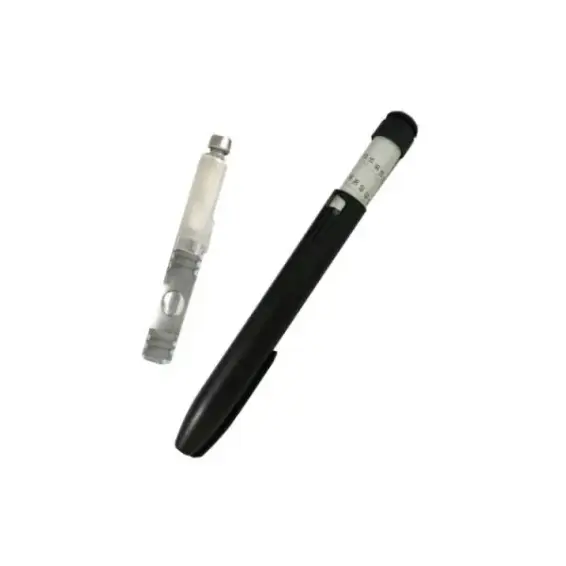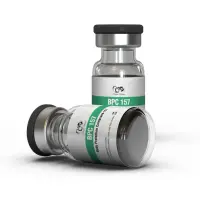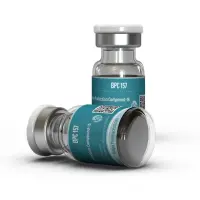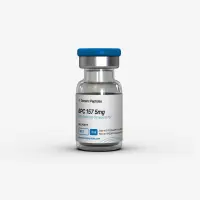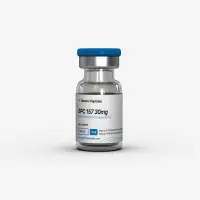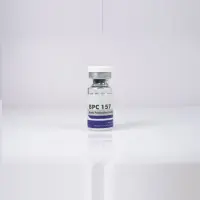Manufacturer:Beligas Pharmaceuticals
Substance:BPC-157 Pentadecapeptide
Package qty.:vial / (2 mg)
Beltropin Ezuse 36IU (Human Growth Hormone) - Enhance Performance & Recovery
Brand: Beligas Pharmaceuticals
Action: Beltropin Ezuse contains Human Growth Hormone (HGH), a naturally occurring peptide hormone produced by the pituitary gland. Its primary actions include stimulating cell growth, reproduction, and regeneration. In the context of sports, this translates to enhanced muscle protein synthesis, increased fat metabolism, improved recovery, and potential benefits to connective tissues.
Use in Sports: As a professional trainer, I see HGH as a powerful tool for athletes aiming for significant improvements in muscle mass, reduced body fat, and accelerated recovery from intense training. It can also contribute to enhanced strength and power over time, as well as improved joint and tendon health, potentially reducing the risk of injury.
Period of Drug Withdrawal: Exogenous HGH has a relatively short half-life of a few hours. However, its effects on the body, such as increased IGF-1 levels, can last for a longer duration. Detection times in anti-doping tests vary depending on the specific test and dosage, but generally, it can be detected for several days to a few weeks after the last injection. Athletes must be aware of anti-doping regulations.
Rate of Suppression of Own Testosterone Production: Human Growth Hormone (HGH) does not directly suppress the production of endogenous testosterone. In fact, some studies suggest it might even have a slightly positive effect on testosterone levels in some individuals, although this is not its primary action. However, when HGH is used in combination with anabolic-androgenic steroids (AAS), the AAS will still cause testosterone suppression.
What Should Be Used During and After Use:
- During Use: When using HGH, it's crucial to maintain a balanced diet rich in protein and essential nutrients to support muscle growth. Consistent and appropriate training is also paramount to maximize its benefits. Some athletes may use insulin alongside HGH to enhance nutrient partitioning, but this practice carries significant risks and should only be considered under strict medical supervision.
- After Use: As HGH does not directly suppress testosterone, a dedicated Post-Cycle Therapy (PCT) aimed at restoring natural testosterone production is not typically required solely due to HGH use. However, if HGH was used in conjunction with AAS, a comprehensive PCT protocol (e.g., Clomiphene, Tamoxifen) is essential following the AAS cycle. Continuing a healthy lifestyle with proper nutrition and training is vital to maintain any gains achieved.
Combinations of the Drug in Sports with Other Anabolic and Androgenic Drugs: HGH is frequently combined with various anabolic and androgenic steroids (AAS) to synergistically enhance muscle growth and performance. Some common combinations include:
- Bulking Cycles: With Testosterone (e.g., Test E, Test C), Nandrolone (Deca), Dianabol (Dbol). HGH can enhance the anabolic effects and potentially mitigate some side effects related to connective tissue.
- Cutting Cycles: With Testosterone Propionate, Trenbolone (Tren), Winstrol (Winny), Anavar. HGH can aid in preserving lean muscle mass while promoting fat loss.
- Pre-Contest/Show Prep: Often used to enhance muscle fullness, vascularity, and fat loss in the final weeks leading up to competition.
HGH is also sometimes combined with other performance-enhancing substances like insulin (with extreme caution and medical supervision), growth factors like IGF-1 (Insulin-like Growth Factor 1), and peptides like GHRPs (Growth Hormone Releasing Peptides) or GHRHs (Growth Hormone Releasing Hormones) to further stimulate growth hormone release.
Possible Side Effects and How to Avoid Them: Common side effects of HGH can include water retention, joint pain, nerve compression syndromes (e.g., carpal tunnel syndrome), and increased insulin resistance. Less common side effects can include acromegaly (with prolonged high doses) and potential growth of existing tumors.
- How to Avoid/Minimize: Start with a low dose to assess tolerance. Gradually increase the dosage if needed, under careful monitoring. Manage sodium intake to minimize water retention. Monitor blood sugar levels. If joint pain or nerve compression occurs, reducing the dose may help. Regular medical check-ups are crucial during HGH use to monitor for any adverse effects. Avoid prolonged use of high doses.
Why I Recommend This Drug (as a Trainer, with caveats): As a professional trainer, I might recommend HGH to advanced athletes who have plateaued with natural training and nutrition and are seeking significant improvements in muscle mass, recovery, and overall performance. Its ability to enhance muscle protein synthesis and fat loss simultaneously can be particularly beneficial. However, it's crucial to emphasize that HGH is a powerful hormone with potential side effects, and its use should only be considered after thorough research, understanding the risks, and ideally under the guidance of a medical professional experienced in its use for athletic purposes. Responsible sourcing of high-quality HGH is also paramount.
Comparison with Other Drugs:
- Compared to Anabolic-Androgenic Steroids (e.g., Testosterone, Trenbolone): While both HGH and AAS promote muscle growth, they do so through different mechanisms. AAS primarily enhance protein synthesis directly and have significant androgenic effects, leading to testosterone suppression. HGH works by increasing IGF-1 levels, which then promotes growth, and it doesn't directly suppress testosterone. HGH also has more pronounced effects on fat loss and connective tissues compared to many AAS.
- Compared to SARMs (Selective Androgen Receptor Modulators): SARMs selectively target androgen receptors in muscle tissue, aiming for muscle growth with fewer androgenic side effects than traditional steroids. HGH's mechanism is different, working through the growth hormone/IGF-1 axis.
- Compared to Peptides (e.g., GHRPs, GHRHs): These peptides stimulate the body's own production of HGH. Exogenous HGH like Beltropin provides a direct supply of the hormone. Peptides can be a less direct and potentially less potent way to increase HGH levels.
